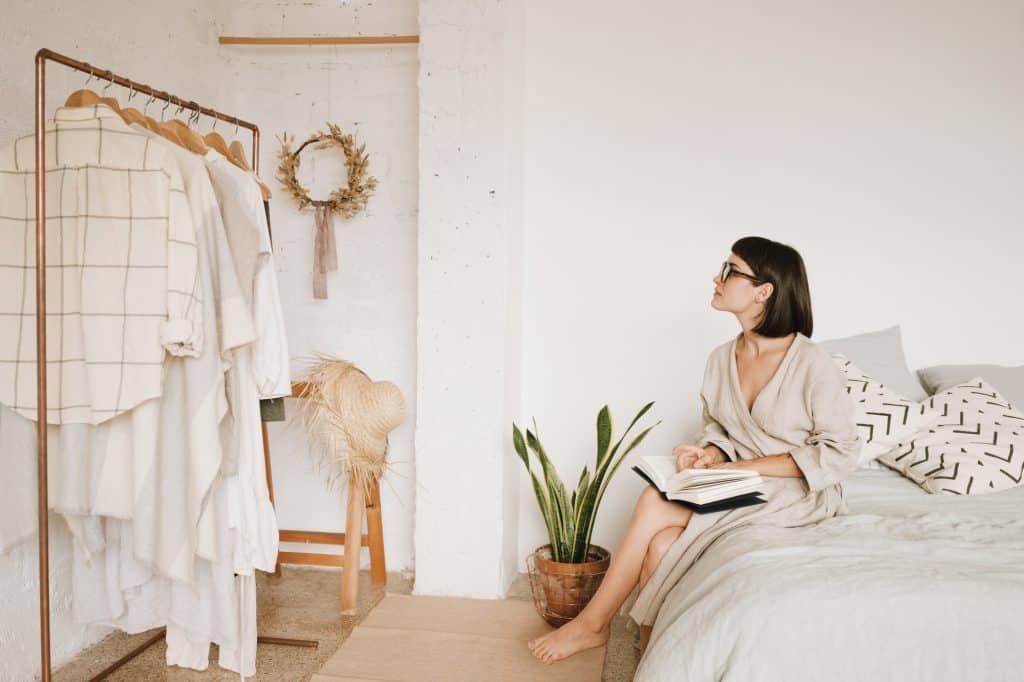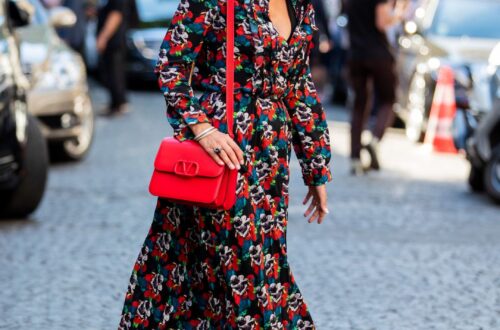Finding your personal style is like discovering your own secret sauce—it’s unique, it’s yours, and it makes everything better. But let’s be real: figuring out what makes you feel confident and authentic in your clothes can feel like solving a puzzle with half the pieces missing. Don’t worry, though—I’ve got you covered. As someone who’s spent years navigating the fashion world (and making plenty of style missteps along the way), I’m sharing 11 expert-approved steps to help you uncover your personal style. These tips come from my own experience, insights from top stylists, and a deep dive into what makes fashion fun and functional. Ready to build a wardrobe that screams you? Let’s dive in.
Why Personal Style Matters
Your personal style is more than just clothes—it’s a reflection of who you are, how you feel, and how you want the world to see you. It’s about curating a wardrobe that makes you feel confident, whether you’re heading to a boardroom or a brunch date. Think of it as your visual handshake—before you say a word, your style speaks for you.
Step 1: Start with Self-Reflection
Before you even open your closet, take a moment to think about you. What’s your lifestyle like? Are you a busy mom juggling school drop-offs, a corporate go-getter, or a creative soul who thrives on bold expression? Your style should fit your life, not someone else’s. I remember staring at my closet in my 20s, full of trendy pieces I bought because they looked good on Instagram models, only to realize they didn’t suit my actual life as a freelance writer who spent most days in coffee shops. Write down three words that describe how you want to feel in your clothes—maybe “confident,” “effortless,” and “bold.” This is your style compass.
How to Reflect Effectively
Grab a notebook or your phone’s notes app and jot down your daily routines, hobbies, and personality traits. This exercise helps you align your wardrobe with your reality, not a fantasy version of yourself. For example, if you’re always on the go, prioritize versatile pieces like tailored jeans or a sleek blazer.
Step 2: Create a Style Mood Board
Inspiration is everywhere, and a mood board is your ticket to finding it. Scroll through Pinterest, flip through fashion magazines, or people-watch at your favorite café. Save images of outfits that make you think, “That’s so me!” When I first started this process, I was obsessed with vintage-inspired looks—think flowy dresses and chunky boots. Pinning those images helped me see patterns in what I loved.
Where to Find Inspiration
Look beyond social media. Check out fashion blogs like Who What Wear or vintage magazines at your local thrift store. You can even draw inspiration from art, music, or your favorite TV show characters. For example, Euphoria’s bold, colorful aesthetic might spark ideas for a vibrant wardrobe.
Step 3: Audit Your Current Wardrobe
Time to get real with your closet. Pull out every piece and ask: “Do I love this? Does it fit? Does it make me feel amazing?” If the answer’s no, donate or sell it. I once held onto a pair of skinny jeans that hadn’t fit in years because they were “cute.” Spoiler: They just made me feel bad every time I saw them. Keep only what aligns with your style words from Step 1.
The 70/30 Rule
Fashion expert Tiffanie Darke suggests a 70/30 wardrobe balance: 70% timeless staples (think jeans, white tees, blazers) and 30% fun, personality-driven pieces. This mix ensures versatility while letting your unique style shine.
Step 4: Understand Your Body Shape
Knowing your body shape is like knowing your superpower—it helps you choose clothes that flatter your figure. Are you pear-shaped, with wider hips? Try A-line skirts to balance your silhouette. Hourglass? Accentuate that waist with fitted dresses. I’m petite with an athletic build, so I lean toward tailored pieces that don’t overwhelm my frame.
Quick Body Shape Guide
Here’s a simple table to help you dress for your body type:
| Body Shape | Characteristics | Best Styles |
|---|---|---|
| Pear | Wider hips, narrower shoulders | A-line skirts, bright tops |
| Hourglass | Balanced bust and hips, defined waist | Fitted dresses, belts |
| Apple | Wider midsection, slimmer legs | Empire-waist tops, straight-leg pants |
| Rectangle | Balanced proportions, less defined waist | Peplum tops, layered looks |
| Petite | Shorter stature | Tailored pieces, vertical stripes |
Step 5: Master Color Theory
Colors can make or break an outfit. Warm skin tones glow in earthy hues like terracotta, while cool tones pop in jewel shades like emerald. I used to wear black all the time because it felt safe, but experimenting with olive green and mustard yellow made me feel so much more alive. Don’t be afraid to try colors outside your comfort zone—just see how they make you feel.
How to Find Your Colors
Visit a professional color analyst if you can, or use online tools like Colorwise.me to analyze your skin tone. Test colors in natural light and note which ones make your skin glow. Pro tip: Neutrals like navy or beige are universally flattering and versatile.
Step 6: Experiment with Trends
Trends are like spices—use them sparingly to enhance your style, not overpower it. Pick one or two trends per season that align with your aesthetic. For example, if you love minimalist looks, try a trending oversized blazer rather than a full-on neon tracksuit. I once tried a bold leopard print skirt because it was “in,” and while it wasn’t me, it pushed me to embrace bolder patterns in small doses.
Where to Shop for Trends
Check out sustainable brands like Everlane or secondhand platforms like The RealReal for trendy pieces that won’t break the bank or the planet. These sites offer unique finds that feel personal and eco-conscious.
Step 7: Invest in Quality Basics
Basics are the backbone of your wardrobe. Think crisp white shirts, well-fitted jeans, and classic blazers. These pieces are your go-to’s for easy, confident outfits. I splurged on a tailored trench coat a few years ago, and it’s still my favorite piece for looking polished without trying too hard.
Best Basics to Own
- White T-shirt: Pairs with everything from jeans to skirts.
- Tailored Blazer: Elevates casual and professional looks.
- Dark Jeans: Flattering and versatile for day or night.
- Neutral Flats: Comfortable yet chic for daily wear.
Step 8: Accessorize Thoughtfully
Accessories are your style’s exclamation point. A bold scarf, chunky earrings, or a sleek watch can transform a basic outfit into something special. I used to shy away from jewelry, thinking it was “too much,” but a simple gold necklace became my signature piece, adding polish to even my laziest outfits.
Accessory Dos and Don’ts
- Do: Mix metals or textures for a modern look.
- Don’t: Overdo it—stick to one or two statement pieces.
- Do: Choose accessories that reflect your personality.
- Don’t: Buy cheap pieces that tarnish quickly—invest in quality.
Step 9: Try the Three-Word Method
Fashion stylist Allison Bornstein’s Three-Word Method is a game-changer. Pick three adjectives to describe your style: one practical (what you wear most), one aspirational (where you want to go), and one emotional (how you want to feel). Mine are “classic,” “edgy,” and “confident.” This framework keeps your wardrobe focused and authentic.
How to Apply the Three-Word Method
Write your three words and use them as a filter when shopping. If a piece doesn’t fit at least one of your words, skip it. This method saved me from buying a trendy floral dress that didn’t align with my vibe.
Step 10: Build a Capsule Wardrobe
A capsule wardrobe is like a greatest-hits album—small, curated, and full of bangers. Aim for 30–50 versatile pieces that mix and match effortlessly. Fashion expert Emma Rose Thatcher suggests creating seven go-to outfits each season for stress-free dressing. I started with 10 core pieces, and it’s been a lifesaver on busy mornings.
Capsule Wardrobe Pros and Cons
| Pros | Cons |
|---|---|
| Saves time and money | Requires upfront planning |
| Reduces decision fatigue | May feel limiting at first |
| Promotes sustainability | Needs periodic updates |
Step 11: Work with a Stylist (Optional)
If you’re feeling stuck, a professional stylist can offer personalized guidance. They’ll analyze your body shape, lifestyle, and preferences to curate looks that feel like you. I worked with a virtual stylist through Indyx last year, and it was like having a fashion fairy godmother. If hiring a pro isn’t in your budget, try online quizzes or apps for tailored advice.
Where to Find Stylists
- In-Person: Look for local stylists via Yelp or Instagram.
- Virtual: Platforms like Indyx or Stitch Fix offer affordable styling services.
- DIY: Use free quizzes on sites like mypersonalstylist.ai to get started.
People Also Ask (PAA)
Here are some common questions from Google’s PAA section, answered to help you on your style journey:
- How do I start developing my personal style?
Begin by reflecting on your lifestyle and preferences. Create a mood board, audit your wardrobe, and experiment with pieces that align with your three style words. Start small and have fun - What is the 70/30 rule in fashion?
This rule, suggested by stylist Tiffanie Darke, recommends that 70% of your wardrobe should be timeless basics (e.g., jeans, tees) and 30% should be fun, trend-driven pieces to express your personality. - How do I know if a style suits me?
Try on different silhouettes and colors in a fitting room. If a piece makes you feel confident and fits your lifestyle, it’s a keeper. Trust your instincts and prioritize comfort. - Can I find my style without spending money?
Absolutely! Start by shopping your closet and styling existing pieces in new ways. Use free tools like Pinterest or apps like Indyx to track outfits and find inspiration.
FAQ Section
How long does it take to find my personal style?
It’s a journey, not a sprint. Some people nail it in a few months, while others take years. Be patient, experiment, and enjoy the process. Reflecting regularly on what you love speeds things up.
Is it okay to mix different style aesthetics?
Yes! Personal style is about blending what you love, whether it’s minimalist with a touch of boho or classic with a punk edge. The key is to make it feel cohesive through colors or accessories.
How do I avoid fast fashion traps?
Focus on quality over quantity. Shop secondhand, invest in timeless pieces, and use your three style words to avoid impulse buys. Brands like Everlane or Reformation are great for sustainable options.
Should I hire a stylist to find my style?
It’s not necessary but can be helpful if you’re overwhelmed. Virtual stylists are affordable (starting at $25/month on platforms like Indyx), and even a one-off session can provide clarity.
How do I make my wardrobe more sustainable?
Shop secondhand, choose quality basics, and avoid trend-driven fast fashion. Digitizing your wardrobe with apps like Indyx helps you wear what you already own, reducing waste.
Final Thoughts
Finding your personal style is like falling in love with yourself all over again. It’s about embracing what makes you unique and letting your clothes tell that story. These 11 steps—from self-reflection to building a capsule wardrobe—are your roadmap to a wardrobe you love. Start small, experiment often, and don’t be afraid to make mistakes. After all, that neon crop top I bought in 2015? It taught me more about my style than any magazine ever could. So, go forth, have fun, and dress like the incredible person you are.





